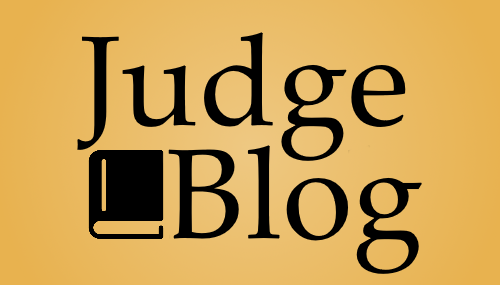
フレッシュ&ブラッドジャッジ認定試験対策ガイド
レベル0試験について
FAB ジャッジ・プログラムは 3 段階のレベル(0、1、2)で構成されます。ジャッジはコミュニティへの参加、 試験の受験、ジャッジ仲間からの推薦を得ることでレベルアップしていきます。本ガイドは、レベル 0 の昇格プロセスに焦点を当てています。
私たちはレベル0ジャッジを、基本的なトーナメント運営や『ヒーローズハンドブック』(近日公開予定!)のルールを含む、『Flesh and Blood』の基本について修得しているジャッジと定義しています。レベル0ジャッジはウェルカムイベントや体験会の運営と進行ができることが期待されます。
試験は40問の選択問題で構成され、合格するには34問の正解が必要です。不合格の場合、すぐに再試験を受けることができます。合格するまで何度でも受験することができます。
レベル0試験で問われる内容(ルール)
このリストは包括的なものではなく、合格点を取るためのガイドとして作成されています。このリストにないことを問われることもあります。
- マッチの進行
- ターン構成
- 戦闘の進行
- ゾーンの位置と特定
- リソースの種類(ライフポイント、アクションポイント、ピッチなど)
- ゲーム開始と終了の手順
- 基本的なカードのプレイとアクティベート
- トリガーの区別
- ヒーローカード、デッキカード、アリーナカードそれぞれの区別
- 武器による攻撃と攻撃アクションカードの違い
- 基本キーワードとその適用(攻撃、続行、{p}の上昇、ドロー)
- 防御カードに能力が適用される場合
レベル0試験で問われる内容(ポリシー)
- 大会公認の必要条件
- フォーマットの定義
- ルール適応レベルによるイベント区分
- イベントにおける個々の役割
- カードの合法性
- 譲歩、投了の合法性
- ゲームレイアウトの要件

レベル1試験について
FAB ジャッジ・プログラムは 3 段階のレベル(0、1、2)で構成されます。ジャッジはコミュニティへの参加、 試験の受験、ジャッジ仲間からの推薦を得ることでレベルアップしていきます。本ガイドは、レベル 1 のルールとポリシーの試験に焦点を当てています。
私たちはレベル 1 ジャッジを、FAB の基本的な要素を全て説明でき、2~3 枚 のカード間の一般的な/メタ的な相互作用について CR (Comprehensive Rules) を用いて裁定を下せるジャッジと定義します。
私たちは将来的にこのレベルをカジュアルルール施行レベルのイベントに特化したものにするつもりですが、レベル 1 ジャッジはCompetitiveのストア・イベントのヘッドジャッジを行う能力を持っているため、現在においてはルール適応レベルCompetitiveおよびProfessionalの方針に関する試験に合格することを受験者に要求しています。
試験は2部構成(L1A-ルールとL1B-ポリシー)で、それぞれ20問の選択問題(単一解答と複数選択が混在)が出題され、合格には17問以上の正解が必要です。試験には90日間のクールダウンがあり、120日以内に両試験に合格し、チェックリストを提出しなければなりません。
ほとんどのTier 3以上のイベント(バトルハーデンド、コーリングス、プロツアーなど)や、その他にもいくつかの会場では、希望すればペーパーテストにてジャッジ試験を受けることができます 。なお、2部の試験(L1A-ルールとL1B-ポリシー)の片方を3回受験して尚再度の受験が必要な場合、4回目以降の受験をアンロックするにはメンターと協力する必要があります。再受験ポリシーやペーパー試験の詳細については、 こちらの記事をご覧ください。 (未訳)
レベル1ルール試験で問われる内容
このリストは包括的なものではなく、合格点を取るためのガイドとして作成されています。このリストに掲載されていない事柄について、最大2問まで質問されることがあります。
ルール試験はコモン/メタの相互作用についての理解を問うものです。具体的には、レベル1ジャッジは以下のトピックに関する質問に答えられることを期待されます:
- レベル 0 試験で出題されるすべてのルール内容(レベル 0 試験で出題されるよりも複雑なシナリオを含む)。
- オブジェクトの同一性(カードに付けられた名称やタイプなど)
- 最後に参照された情報の適用
- 条件付き効果が適用される場合
- カードをプレイしたり能力を発動したりする手順(対象の選択、意思決定、コ ストの支払い、解決、およびその過程における優先権の扱い方を含 む)
- 優先権(優先権の獲得、プレイヤー間の優先権の受け渡し、効果の解決やアクティベートのタイミングを含む)
- オブジェクトがゾーン間を移動する方法
- 合法的な目標オプション
- 相互作用への置換効果の適用
- カード/能力のコストの変更(代替コスト、コストの増減など)
- レイヤーの解決プロセス(解決失敗した時の処理を含む)
- X と * の値の違い
- プロパティの変更(カウンターを含む)
- どのプレイヤーも優先権を持たないフェイズにおけるトリガーの解決方法
- 手詰まりとデッドロックの際の解決方法
- プロパティを「得ることができない」と「失うことができない」の違い
- 同時に発生した効果(置換効果や誘発効果を含む)の順序付け方法
- 戦闘の処理(ヒット時効果や戦闘の手順を含む)
- 代表的なキーワード能力の仕組み
- ゾーンの変更に伴うダブルフェイスカードの相互作用
レベル1ポリシー試験で問われる内容
このリストは包括的なものではなく、合格点を取るためのガイドとして作成されています。このリストに掲載されていない事柄について、最大2問まで質問されることがあります。
レベル1ポリシー試験は、競技規則施行レベルのイベントを運営するための基本的な理解を問うものです。具体的には、レベル 1 ジャッジは以下のトピックに関する質問に答えられることが期待されます:
- レベル0試験で出題されるすべてのポリシー(トーナメント手順を含む)内容(レベル0試験で出題されるよりも複雑なシナリオを含む)
- PPG (Procedure and Penalty Guide)に記載されているゲームプレイ上の失敗
- デッキに関する 3 種類の問題( デッキプレゼンテーションエラー、デッキリストエ ラー、カードプールコンテンツエラー)
- 行動に関する違反行為とその適用(特にスポーツマンシップに反する行動、 そして攻撃的な行動について、マイナーとメジャ ーの両方)
- 記載されている違反行為に対する PPG の適用
- 大会の流れを乱すような意見の相違を解決するため の、TRP(Tournament Rules and Policy) 内のガイドラインの使用(例:無作為化の 方法について意見の相違があった場合)
- ジャッジの行動規範とそれに対する違反の扱い方
- 教育、公平性、使命のバランスをとるというジャッジの基本理念を理解すること

レベル2試験について
FAB ジャッジ・プログラムは 3 段階のレベル(0、1、2)で構成されます。ジャッジはコミュニティへの参加、 試験の受験、ジャッジ仲間からの推薦を得ることでレベルアップしていきます。本ガイドは、そのうち試験の部分、特にレベル 2 試験に焦点を当てたものです。
私達はレベル 2 ジャッジを、FAB における複雑な相互作用について技術的な詳細を用いて説明することができ、CR の助けを借りてあらゆるカード間の珍しい/抽象的な相互作用について裁定を下すことができるジャッジと定義します。ポリシーの面では、フロアジャッジの助けを借りて 32 人規模のプロクエ ストやロード・トゥ・ナショナルズを自信を持ってリードし、そのようなイベ ントで出てくるであろうポリシーの質問に対して正しく裁定を下すことができることを期待します。
レベル2ルール試験で問われる内容
このリストは包括的なものではなく、合格点を取るためのガイドとして作成されています。このリストに掲載されていない事柄について、最大2問まで質問されることがあります。
ルール試験は、FAB 内のより技術的なやりとりの習得を問うものです。具体的には、レベル2ジャッジは以下のトピックに関する質問に答えられることを期待されています:
- レベル 1 ルール試験に出題されるすべての内容、およびレベル 0 ルール試験に出題されるすべての内容
- 効果のコピー(コピー可能なプロパティを含む)
- ゾーン間およびゾーン間移動時のカードの可視性
- スタックからのレイヤーの除外が生じる場合
- 置換効果同士の相互作用
- マクロの適用方法
- 持続効果の適用
- ステージングシステム(値の修正の適用順)についての理解
- アタックレイヤーとアタックプロキシの違い
- 複数の対象が存在する状況で生じる戦闘において生じる問題(コンバットチェインの途中でターゲットを変更する際のルールなど)
- 効果のデフォルトパラメータ
- キーワード能力の特異な挙動(現在のところ理論上のものであるが、既存のルールで明確にサポートされているものを含む)
レベル 2 ルール試験に関する最後の注意事項:この試験は多くのジャッジから、このプログラムの中で最も難しい試験であると考えられています。これは意図的な挑戦であり、私たちの意図は、この試験に合格した人が、FABに参加する間、正確な裁定を下すと確信できるようにすることだからです。
この試験で出題される問題の多くは、現場でジャッジが実際に目にする状況に基づいたものであるため、数多くのカードを扱います。そのため、本試験を受験する際には、戦闘チェインやボードの状態について一層の整理をしておくよう強く推奨します。
レベル2ポリシー試験で問われる内容
このリストは包括的なものではなく、合格点を取るためのガイドとして作成されています。このリストに掲載されていない事柄について、最大2問まで質問されることがあります。
現在、プログラムのニーズに合わせて、レベル2ポリシー試験を再構築しているところです。この試験がリリースされるまでは、レベル2ポリシー試験ガイドはレベル1ポリシー試験ガイドと同じです。
以下の学習ガイドは、2024年第2四半期末までに発行されると予想される新バージョンのポリシー試験に基づいています。この移行が行われる際には、JudgeHubフォーラムのOfficial Frequent Updatesカテゴリーでお知らせいたします。
レベル 2 ポリシー試験は、32 人で行われるプロクエスト/日本選手権予選のヘッドジャッジに期待されるスキルを、最も頻繁に見られる問題に関してより深くテストするように設計されています。具体的には、レベル 2 のジャッジは以下のトピックに関する質問に答えられることが期待されます:
- レベル1ポリシー試験のすべての内容、およびレベル0試験のポリシー内容(これらの試験に出題されるよりも複雑なシナリオを含む
- ゲームルール違反に対する修正点の正しい適用
- 誘発忘れの修正方法の正しい適用
- ルール・シャーキング、不正行為、そしてその2つの違い
- TRPの「トーナメント・マテリアル」の章
- TRPの「トーナメント・ロジスティクス」の章
- TRPの「ゲームプレイ・ロジスティクス」の章
- アップグレードとダウングレードの正しい適用
- 同じコールの中で複数の反則が発生した場合の正しい反則とペナルティの特定
- ジャッジの基本理念となる3本柱のバランスを取りながら、複雑な状況を修正する
- フロアジャッジからのアピールへの対処

試験全体に対するアレコレ
さて、各試験で何が出題されるかを正確に説明したところで、試験そのものについて少しお話ししましょう。
まず、 exam introductionガイド(未訳) を一読することを強くお勧めします。このガイドには、試験でどのように言葉を使うかについてのすべてが書かれています(標準的な名称リストなど、それぞれの名称は受験者を助けるために設定されています!)
第二に、試験には真剣に取り組むこと!(特にレベル2!)十分な休息、十分な食事、精神的な準備ができているときに受験してください。今日準備ができていなくても、また明日があります。準備が整っていない時に受験して、クールダウンの間ずっとイライラするよりは、コンディションを整えるための一日を余分に作りましょう!
第三に、忘れないでほしい。もしこのプロセスが楽しくないのであれば、一歩下がって、この道を進むことが本当に自分の望むことなのかどうか確かめることを強く推奨します。私自身もテスト前には気を病む性質なので、テストに伴うストレスや不安は理解できます。それでも、この道のりそのものに価値が感じられなければ、きっと目的地も同じように無価値なものに思えてしまうはずです。
第四に(そしてより哲学的なものの最後に)、古い格言を思い出してみましょう。”You either pass or you learn”(試験に落ちたとしても、学びはある)。 FAB道を極める旅の途中で、1つや2つの試験に落ちるかもしれません。そんなこと、一向に構わないのです!合格でも不合格でも、受けた試験を利用して自分の得意なところと足りないところを学び、時間をかけてそれを実行に移しましょう。試験にやや長めのクールダウンがある理由のひとつは、今すぐ試験を受ける可能性があるというプレッシャーを感じることなく、あなた自身が成長する時間を確保するためです。
さて、私や友人の役に立った、TCGの試験特有のことを紹介します。FABの試験特有のこともいくつか添えるので参考にしてください。(あなた自身のことも、是非コメントでシェアしてくださいね!):
- 試験中、私はいくつかの色分けされたインデックスカードを使って、画面上のカードと物理的なものを対応させ、自分の脳に合った方法で並べた。
- (FABの試験では)テキスト版のカードに表示されるテキストは常に最新版で、正誤表も含まれている。画面の右下にボタンがあり、すべての画像をテキストに反転させることができる。カードにアートが必要な場合は、もう一度クリックしてアートに戻すことができる。
- 多くの人は、試験問題を解いてそれを保存し、数時間(あるいは一晩!)試験問題から離れ、もう一度解き直すことで合格していく。最初に試験を読み込んでから解答を提出するまで、24時間ある。(ただし、正確に24時間-ナノ秒単位で-なので遅れないように)。
- 関連:試験全体を一度に解く必要はない!休憩でも、ストレッチでも、なんでもして構わない。(ただし、対面式のペーパーテストを受ける場合は、試験監督の時間も尊重すること)。アーモリーの各ラウンドの合間の時間を使って解き進みながら、L1ルールに合格したジャッジを知っています!
- 一度でも試験を受けたことがある人はわかるだろうけども、試験を終えた後には正解の完全な解説(文書の引用を含む)が提供される。私は試験中、メモ帳を開き、わからない問題にはその場で自分なりの解説を書くようにしている。そうやって書き下すことで、アイデアが練り上げられるという研究結果もある。
- 提出を押す前に、必ず解答の最終確認をすること!再試験を求めるメールのほぼ3分の1は、「提出を押す前にこの答えを変えたはずなのに!」とか「Bと書くつもりがCになってしまった」というもの。
- この試験は、持込可、検索可ではあるが、友達可(またはDiscordで質問すること可)の試験ではないことを忘れないように。私たちが知りたいのは、あなた自身が正しい答えを導き出すためにドキュメントを活用する能力である。もしあなたがDiscordで答えを聞いたことが発覚した場合、 あなたのスコアは無効となり、JCCに送られる (試験を始める前に、 守秘義務に関する声明を読むように!)
- インターネット上の回答がすべて正しいとは限らない - 最後には必ずあなた自身の判断(そしてルール文書!)で回答するように。ソーシャルメディア上の答えの中には、その時点では正しくても、その後ルール文書が変更されたものもある(関連する重要な注意事項:リリースノートは一般的には後から更新されない。ルールが後で変更された場合、リリースノートの裁定は最新の裁定ではない可能性があります)。
最後にこれはコミュニティの大部分にとって最も重要なことですが、もしテストの受験のために必要な配慮や対応があれば、遠慮なく声をかけてください。
私が思いつく限りでは、イベント会場から離れた静かな部屋でのペーパーテスト、大きなタイプ(または特別なフォント)の試験、テキストを音読してくれる試験官の準備、または自分の答えを説明できる無言の聞き手(ただしフィードバックはしてくれません)などが考えられます。必要とされる知識レベルを変えない限り、私たちは要望を歓迎します。 FABはすべての人のためのものです。.
まだ試したことがない種類の対応については、利用できる場所が限られている場合があります(テストチームのメンバーと一緒に試さなければならない場合があります)。でも、気になることは、いつでもなんでも聞いてくださいね。

